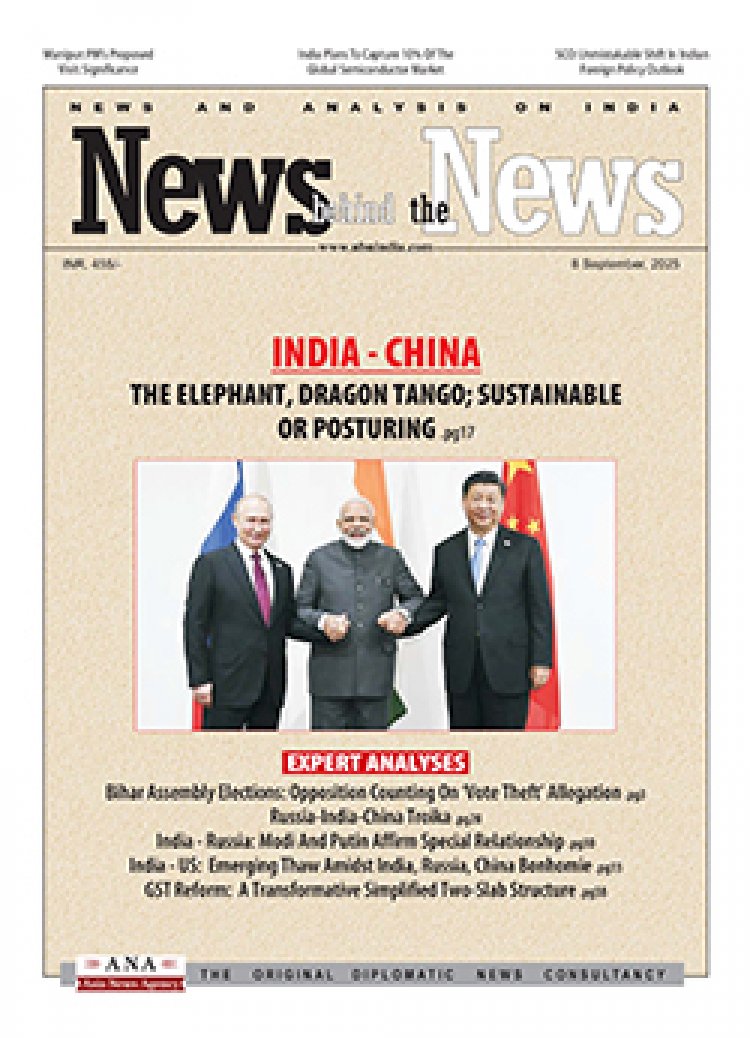India - Thailand: PM Modi’s Visit
STORIES, ANALYSES, EXPERT VIEWS

Prime Minister Narendra Modi’s visit to Thailand last week for the BIMSTEC Summit and bilateral talks offers a chance to build on the deep-rooted ties and explore new areas of cooperation.
Mutually complementary partnership
Thailand’s ‘bamboo diplomacy’, marked by flexibility and adaptability, has served its interests well as it balances itself between the big powers. But it is often misread in India, according to Suchitra Durai (former Ambassador of India to Thailand).
Thailand is an “important regional player, with a strong manufacturing base in the automotive and electronics sectors, and laudable capabilities in agro-processing and construction. It is a popular tourist destination. Thailand, which has a good public health programme, has a great regard for India’s prowess in IT, pharmaceuticals, and vaccine development….."
India’s Act East policy announced by the Prime Minister in 2014, is complemented by Thailand’s Act West policy. India’s Vision of the Indo-Pacific complements the ASEAN Outlook on the Indo-Pacific, articulated by Thailand during its chairmanship of ASEAN in 2019.
A robust defence and security partnership: Durai provides a backdrop to the bilateral relations. Thailand is a maritime neighbour and both sides have exchanged regular high-level visits. “We have a robust defence and security partnership. Our armed forces participate in annual or biannual exercises with Thailand. India also participates in the largest multilateral exercise in the Indo-Pacific region—the Cobra Gold exercise—co-hosted by Thailand and the United States. Security cooperation is of a high order and remains largely below the radar, which adds to its effectiveness.”
Cultural and educational exchange are important aspects of the bilateral relationship. The Indian diaspora, numbering around four lakh, is an important bridge between the two countries.
Economic ties fundamental to bilateral relations: Economic and commercial ties are “fundamental to our bilateral relations. It was with Thailand that India signed its second Free Trade Agreement in 2003. India’s trade with ASEAN currently forms 11 per cent of our global trade. Our bilateral trade with Thailand — ASEAN’s second-biggest economy — is not insubstantial, standing at $16.9 billion (2022–2023), though the trade balance is tilted in Thailand’s favour.”
Trilateral Highway, a game changer: Both sides are keen to operationalise the Trilateral Highway from Moreh (Manipur) to Mae Sot on the Thai–Myanmar border. That “would be a game-changer. However, given the internal situation in Myanmar, the project is considerably delayed. Further, despite agreements signed in 2019, port-to-port connectivity between India’s eastern seaboard and Thailand’s west coast continues to be a work in progress.”
Regional cooperation: Durai notes the two countries “cooperate closely under the ASEAN–India and East Asia Summit (EAS) frameworks. "As a founding member, Thailand is a key ASEAN interlocutor for us. India and Thailand also work together in sub-regional mechanisms such as the Mekong–Ganga Cooperation (India is the oldest partner of the Lower Mekong countries), BIMSTEC, the Indian Ocean Rim Association (IORA), and the Ayeyawady–Chao Phraya–Mekong Economic Cooperation Strategy (ACMECS).”
















